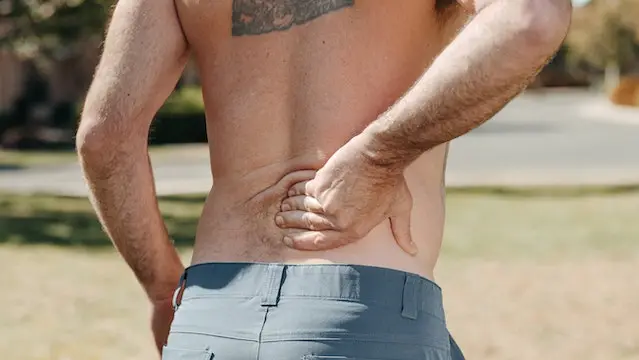Lower Back Pain

Lower back pain, or LBP, is an extremely common problem. It has a wide variety of causes, and may come on suddenly, or gradually. The pain can stem from muscles, joints, or discs. It may be as a result of sudden trauma, or be a repetitive motion injury.
It may seem trivial to say that someone has LBP, but this common complaint can cause loss of work, a spike in use of health care services, depression, family strain, and lack of self-esteem. Imagine being in pain all the time - it's very draining.
By itself, LBP doesn't affect how your body responds to exercise - you can reach your cardio goals, strength markers, and agility and flexibility needs. However, the constant presence of LBP might elevate the level of pain experienced, and you may give up short of your goals because of the increased pain.
Usually most episodes of LBP don't need any specific treatment, but sufferers are advised to modify activities, and to include icing, OTC analgesics, and daily flexibility work - stretching. If you need to stop activity for a while, keep it as short a time as possible, as inactivity can be as negative a factor as the cause of the flare-up itself.
If you have chronic LBP - more than three months - consult a physician to rule out or confirm any injury and discuss pain management. Next, consult a qualified post-rehab trainer for exercises that will strengthen you without causing more distress and pain.
Ideally, your program will include abdominal strengthening, such as back extensions, planks (modified to knees if needed), walking, and reinforcement of basic functional movements. The best thing to remember day-to-day is to keep moving - a little or a lot, depending on how your LBP is doing, will do wonders to help you.